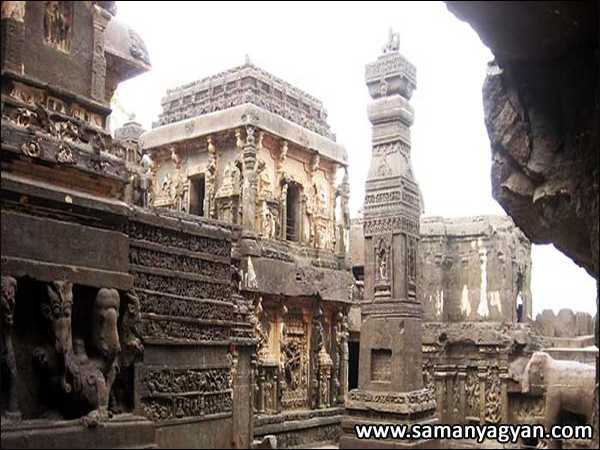Ajanta Caves Quick Facts
| Place | Aurangabad, Maharashtra (India) |
| Built in | 6th to 10th century |
| Type | Caves |
Ajanta Caves Overview
The Ajanta Caves are about 29 rock-cut Buddhist monuments caves and monasteries, located in the Aurangabad district of the Indian state of Maharashtra. Of all the caves built here, the one, in particular, is the Kailash temple dedicated to Lord Shiva located in the 16th cave which is chariot shaped, is the largest single monolithic excavated rock in the world. The Kailash temple also includes gods, goddesses, and mythology summarizing the Hindu epics.
The monasteries built here were used by Buddhist monks to pray and study the teachings of Lord Buddha. You can see the best example of depiction and craftsmanship related to Buddhism here.
Ajanta Caves History
These caves and monasteries date back to about the second century BC. They were built between 480 or 650 century AD. The amazing paintings made in these caves and the incredible sculptures made of rocks are an unmatched example of ancient Indian art.
The Brilliance of these famous cave paintings, even after more than a thousand years, seems to be the same as it was in ancient times, their color has neither faded nor deteriorated. This is a matter of surprise for the scholars of modern times. These famous caves of ancient India have always been the main center of attraction for tourists coming from all over the world.
Ajanta Caves Interesting Facts
- The Ajanta Caves are 101 km from Aurangabad district of Maharashtra. are located in the far north.
- Situated on the Sahyadri hills, these 29 caves (according to official calculations by the Archaeological Survey of India) have about 5 prayer halls and 25 Buddhist monasteries.
- The height of these caves ranges from 35 to 110 feet above the river.
- These caves are built in the shape of a horseshoe, which has great ancient and historical importance.
- These caves can be divided into two parts. In one part of the cave there is a glimpse of Hinayana Buddhism and in the other part of the Mahayana sect.
- The Hinayana part has 2 prayer halls and 4 viharas (the abode of Buddhist monks) and the Mahayana part has 3 chaitya halls and 11 viharas.
- Both 'Fresco' and 'tempera' paintings have been made in these caves. Before painting, the wall was thoroughly scrubbed and cleaned and then a coating was applied to it.
- These caves were discovered in 1819 by Army Officer John Smith and his team.
- When in the year 1819 he had come to Aurangabad district for hunting, only then did he see a series of these 29 caves and thus these caves became world famous.
- Beautiful artwork has been made on the walls of these caves with different postures of beautiful apsaras and princesses, which is a very good example of excellent painting and sculpture here.
- Caves of the 19th century, in which there are statues and pictures of the followers of Buddhism. Made with the help of a hammer and sugar, these idols are a wonderful example of beauty beyond imagination.
- These caves have been declared a World Heritage Site by UNESCO in 1983.
- You can visit these caves any time of the week except Monday because Monday is a holiday here.
- Bus facility is available to Aurangabad from the main cities of Maharashtra like Mumbai, Pune, Ahmedabad, Nashik, Indore, Dhule, Jalgaon, Shirdi, etc.

